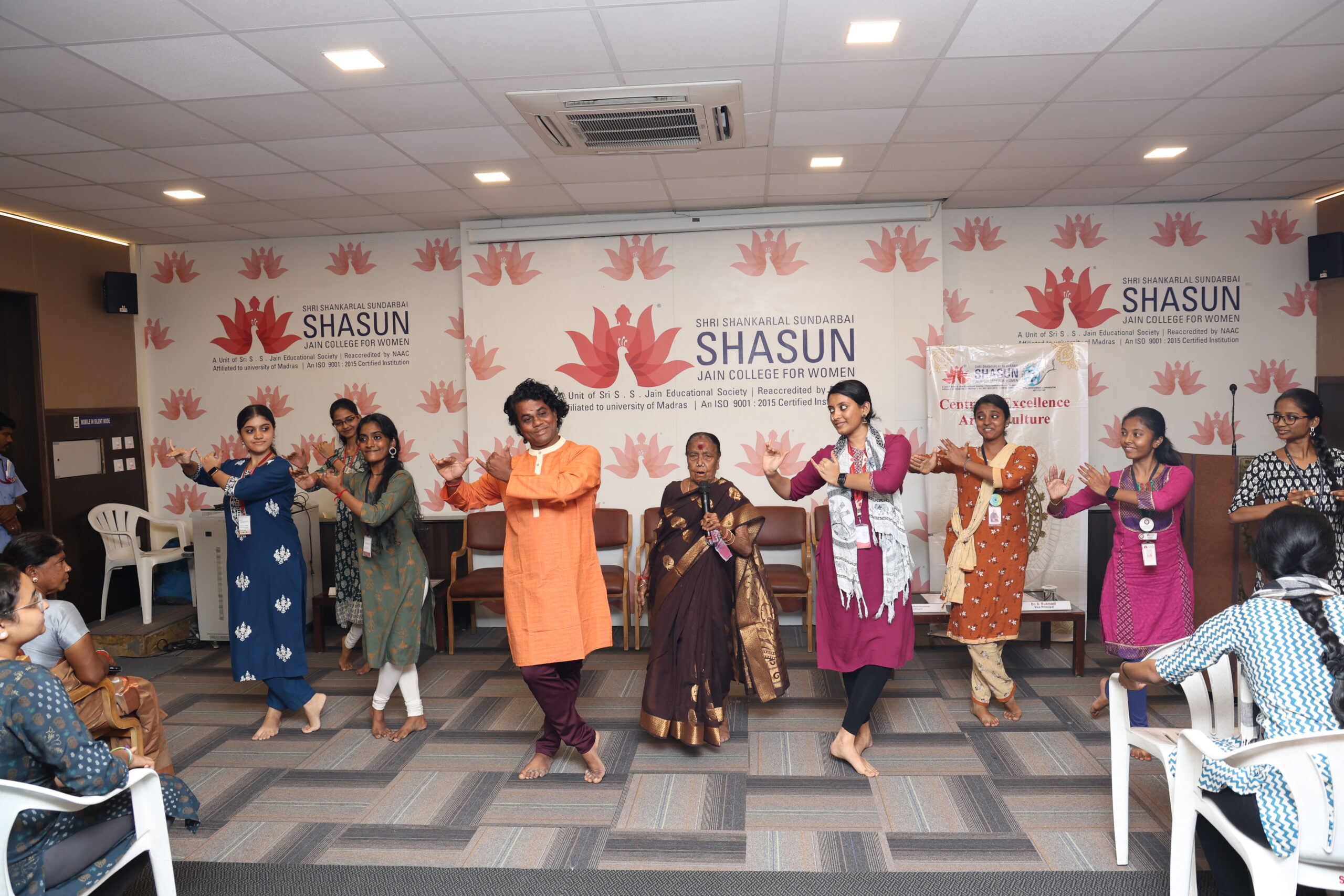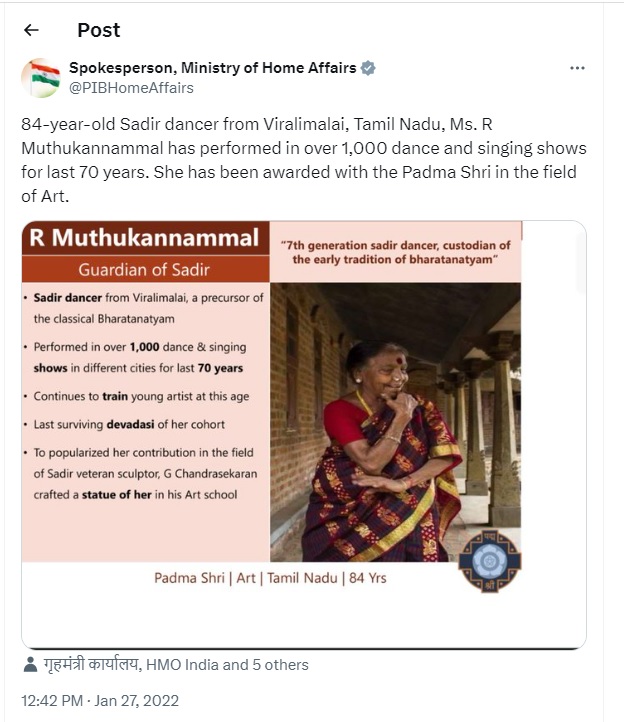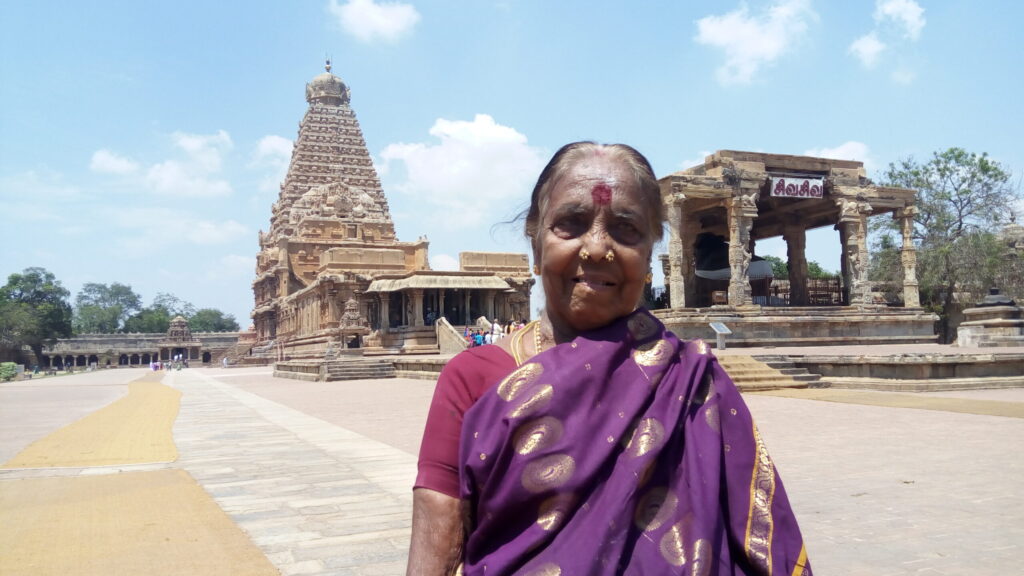Padma Shri awardee 87-year-old R. Muthukannammal is known to be the only surviving artiste of the Devadasi tradition in India. Hailing from the Viralimalai village of Pudukkottai district in Tamil Nadu, she is the seventh generation of the ‘Sadir’ dance community. Viralimalai village is known for the Subramanya Swamy temple, where 32 Devdasis have served as a goddess.
Sadir dance origin
Sadir is an ancient dance form dating back to the 16-17th centuries, then known as ‘Sadirattam’. It got widely popular in the reign of Martha Kingdom – a solo dance performed for centuries by Devadasis in temples, and later also in the royal courts of South India, especially in Tamil Nadu. A unique characteristic of Sadir dance is that the performer dances and sings simultaneously. Now a veteran, R Muthukannammal continues to perform, alongside teaching the finer nuances of Sadirattam to dancers on their journey of learning Bharatnatyam.
Bharatanatyam and Sadir
One of the most popular classical dance forms, Bharatnatyam, is said to trace its lineage to Sadir dance. Most of the components of Sadir, including the gestures (Adavu) have been adopted in Bharatanatyam. It is also believed that some Nattuvanars – men who accompanied the devadasi dance as musicians and dance masters – gave the name Bharthanatyam to Sadirattam during the 19th Century.
Hereditary Bharatanatyam dancer Ms. Nirtiya Pillai told The Voices, “Nattuvanars from different families, the Vazhuvoor Ramaiah Pillai family and Kittappa Pillai family, began to call it Bharatanatyam. Historians such as Davesh Soneji confirm that from the 15th century itself, the name Bharatanatyam began to come into practice. Also, different districts of Tamil Nadu hold accounts of different local histories. Swamimalai holds one narrative, Pudukottai another, and Tanjore a third one. And not just people who associated with the dance form, even academicians performed research on it.” She added, “It is quite possible that while locals referred to it as Sadir, people who wrote about it might have termed it Bharatanatyam.”

Mutthukannamal reminisces about her journey
In celebration of International Women’s Day 2024, the title of ‘Shasun Shreshta Stree’ was conferred on R Muthukannammal by the SS Jain College of Chennai. Gracing the occasion, Muthukannammal interacted with the students and also taught some basics of Sadir to them. Talking about her journey, Muthukannammal said, “Subramaniyam Swamy temple was built under the Pudukottai Samathanam (Province), and the last known kingdom of Pudukottai was ruled by Raja Rajagopala Thondaiman. The kingdom would provide ration, salary and land to those who served for the temple. Our routine comprised of four dance performances daily during the poojas in the Viralimalai temple, and also during festival celebrations at the temple.”
She further added, “We are Deverku Adiyaar (Devadasis), which also meant that we couldn’t marry. I was seven when I was married to Lord Subramayaswamy and made to wear the mangalsutra in the temple. However, I did marry later. My husband was a cinema theatre manager, we had two children, both now married and settled. He passed away some years ago, but in our culture, we don’t remove the mangalsutra and bindi.”
In her speech, she spoke of her father, Ramachandra Nattuvanar, who was also her guru. He taught Muthukannammal and the other 32 temple dancers, the nuances of Sadir. “My father taught ‘Viralimalai Kuravanchi’ performance to famous Bharatanatyam exponent Padmabhusan Padma Subramanyam”. Her grandmother and aunts were all Sadir dancers. Alongside them, she performed in the Viralimalai Murugan temple and some others, and also at the Jamindar and Pudukottai palaces of South Tamil Nadu.
“Guru Muthukannammal knows many unique dance gestures and songs, and in multiple languages like Tamil, Telegu, Marathi, Kannada, Sanskrit, Maithili, and Hindi. But she doesn’t have written evidence of her songs and adavu. These songs and dance movements are stored only in her memory”, said Dr. Ramadevi, director COE of SS Jain, addressing her current struggles to preserve the history of Sadir dance.


Recognitions received
Over the years, R Muthukannmamal’s dedication to art has been honoured by organisations through various mediums and formats. Writer and Associate Professor at the University of Pennsylvania Davesh Soneji compiled a book titled ‘Unfinished Gestures: Devadasis, Memory, and Modernity in South India’. The book was published in 2012 by The University of Chicago Press. In 2018, Dakshinchitra Art Foundation, Chennai, awarded R Muthukannammal with the title of ‘Dakshin Chitra Virthu’. In 2019, director S. Shanmuganathan made a documentary film on her life titled: ‘Deveradiyaar in Sadir – The Life and Art of Muthukannammal’, in support of the Films division of the Ministry of Information and Broadcasting Films Division. In 2022, Muthukannmamal was honoured with the fourth-highest civilian award in the Indian Republic, ‘Padma Shri’.
The genius of Sadir: a way to remember
In the temples of Tamil Nadu, is where the Sadir dance form originated and received continuous support from. The dancers performed when the deity would be taken around the temple as well as on important streets of the town during festivals. R Muthukannammal continued to perform in temples and also taught the dance to many disciples over the years despite the fact that the patronage for these dancers was constantly diminishing.
The last surviving paradigm, an important remnant of the glorious past of the Devadasi community, R Muthukannmmal is regarded as Guru for preserving the tradition that held high the art forms of music and dance in the state for several decades. Artists and enthusiasts alike are of the thought that a century old tradition as Sadir, should be recognized and archived by the Sangeet Natak Academy and Central Cultural Department of Tamil Nadu.


The story is based on personal research of the author, during his visit to Viralimalai village in March 2024, where he attended Women’s Day events at Shri Shankarlal Sundarbai Shasun Jain College for Women, Chennai.
Copyeditor: Arunima Maharshi

